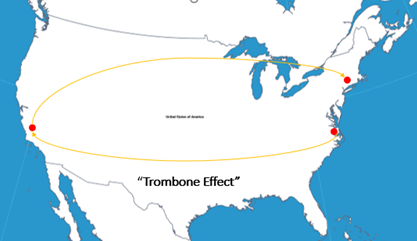How to – Benchmark CDNs with Catchpoint
In this How-To video, we’ll look at how Catchpoint can help you evaluate which Content Delivery Network you should be using.
In this How-To video, we’ll look at how Catchpoint can help you evaluate which Content Delivery Network you should be using. CDNs, as they’re called, are not one size fits all, especially when it comes to location. Many companies simply select one CDN and run with it, even though their provider might not perform very well in all places. It’s also tough to take an objective look at CDN performance if the only metrics you’re seeing are from the provider themselves, so we’ll be using Catchpoint to take a look at multiple CDNs, and how we can use it to help you make more informed decisions.
The Why Of CDN
A CDN is essentially a network of servers designed to make content distribution more reliable and effective. If you wanted to send a message across the world without a CDN, both your outgoing message and the return message would suffer some severe performance issues as it gets bounced between transit providers. Even if you’re not sending something far, you can end up with unoptimized paths that can create the “Trombone” effect i.e., if you send something from DC to Boston, and it gets routed through LA along the way.

Applied to web transactions at scale, even small inefficiencies like this can carry a large dollar value.
CDNs streamline this process. While they don’t host content, and they don’t replace the need for proper hosting, they help prevent service interruptions by caching content at the network edge (usually around an internet exchange point, or IXP).
There are a lot of CDNs out today, including Fastly, Cloudflare, Quantil, Akamai, Cloudfront, the list goes on for quite a while. It’s also important to note that they won’t all self-label as CDNs, like how Fastly is the ‘edge cloud platform’ – but how are you going to evaluate which ones you should be using, and where?
Well, you’d probably start with synthetic testing, but you should know that cloud nodes (where a lot of Synthetic Testing happens these days) won’t indicate the CDN’s performance. You’re going to need to feel the CDN’s heartbeat, and you’d only do that with a backbone node. One big problem you’ll have is that comprehensive backbone coverage is not easy to come by. Fortunately, Catchpoint has hundreds of backbone nodes across the world.
From there, we’re capable of running CDN benchmarking tests against any known provider.

AT Internet recently used Catchpoint to measure the performance of a CDN provider under consideration. Through Catchpoint, AT Internet tested its JavaScript tag from multiple locations within Asia — including Tokyo, Hong Kong, Jakarta, and Delhi — and analyzed how the CDN would improve performance within the region. Seeing that the CDN would help reduce latency in key Asian countries helped AT Internet make their purchase decision. “We were able to ensure the investment was justified,” says Thomas Fisher, Business Unit Manager at IT Internet.
How CDN Benchmarking Tests Work
Say we’re running a test from London. We want to evaluate a lot of providers at once, so we’ll run five different tests across five different CDNs, to transmit five identical objects, such as a 1MB picture.
Each of those tests is being executed from the source, thanks to Catchpoint nodes embedded deep in the service providers. Each of the tests will examine DNS, Connect, Wait, Load, and Throughput values for the object. You’ll be able to compare results and see which one is the best fit for a specific area. A provider that has good metrics in China might not perform as well in Europe, or the Americas.

In this How-To Video: Learn How To Pick The Right CDN By Benchmarking Performance With Catchpoint
- Understand how CDNs have an impact on your online presence.
- Learn how CDN benchmarking works.
- Find out how to benchmark CDN performance using synthetic testing on Catchpoint’s Node Network.
Let’s hop in!


